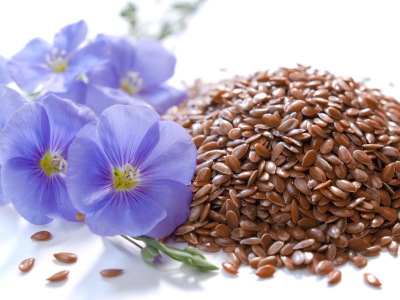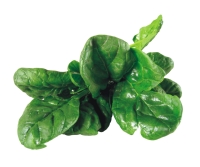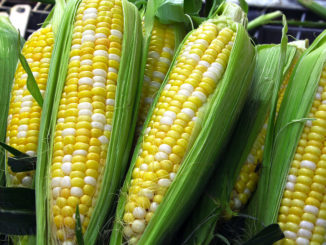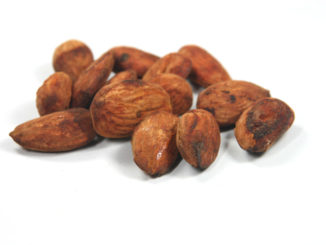
Foods containing high amounts of vitamin E, the recommended daily amount and the reasons why this vitamin is important for our bodies
As you make your way through your diet plan, getting in plenty of vitamin E foods will be important to make sure that your nutritional intake is well balanced and your body’s needs are going met.
.
Many people often overlook the various vitamins and minerals that they should be taking in on a daily basis because they are far too wrapped up in looking after their calorie, carbohydrate, fat, and protein content instead
Vitamin E Plays Several Important Roles
While it is important that you make sure that you are monitoring your calorie and macronutrient intake, micronutrient intake is also vital to success. That’s where vitamin E foods come into play. Vitamin E is a fat soluble vitamin that will have a number of very essential roles in the body so getting high enough amounts will be critical to your success.
If you choose to overlook eating vitamin E foods you will start to become deficient which can set you up for numerous health problems down the road.
Let’s have a quick look at the top vitamin E foods that you should be eating as well as what this vitamin can do for you.
A List of Foods High In Vitamin E

Learning which vitamin E foods to include in your diet regularly will make meeting your daily requirements very easy and fortunately, if you’re already focusing on getting in plenty of healthy fats you should be well on your way to getting sufficient levels.
Foods With High Levels of Vitamin E Include:
- Almonds, dry roasted
- Brown rice
- Collard greens
- Dark green leafy vegetables
- Eggs
- Kale
- Mustard greens
- Olives
- Organ meats
- Papaya
- Soybeans
- Sunflower seeds
- Swiss chard
- Spinach
- Turnip greens
- Wheat germ
Having a salad made with spinach and sprinkling on top some sunflower seeds and slivered almonds would be a very easy way to meet your full daily intake so that you don’t have to rely on any supplements for this important vitamin.
So there you have all the stats on vitamin E foods that you need to know. This fat soluble vitamin is one that some do miss out on if they’re using an ultra low fat diet, so something that must be considered.
Remember that healthy fats should always be included in a proper diet plan and this is one big reason why. By keeping the focus on vitamin E foods in moderation that contain these healthy fats, you’ll still maintain or lose weight but also promote better health as well.
Why We Need Vitamin E
Despite the fact that the name makes it appear as though there’s just one vitamin E nutrient, the truth is that there are many different substances that will be active throughout the body that are still classified as being vitamin E.
These substances are often referred to as alpha tocopherol, beta tocopherol, gamma tocopherol, as well as delta tocopherol. All of these will work in conjunction to help bring you to a state of optimal wellness.
One of the most important roles for vitamin E foods in the body is to help to prevent the oxidative stress that can occur as you go about your daily living. Each day you will encounter a number of different free radicals within the environment that can react to the body and put you at risk for various illnesses.
Vitamin E foods are going to help to prevent these free radicals from becoming reactive therefore offsetting the negative effects they would otherwise have on you.
It works in conjunction to do this with vitamin C, glutathione, selenium, as well as any vitamin B3 containing foods that you consume.
Another benefit that eating a number of vitamin E foods will provide you is that they will help to support healthier skin. This mostly comes in the form of protecting you from UV damage, whenever you’re out in sunlight.
Most people are already very well aware of the risks of skin cancer and sun exposure, so not only is using a good sunscreen imperative to protect against this, adding plenty of vitamin E foods to your diet will be as well.
Some will also use creams that have been fortified with Vitamin E for this reason.
Moving on, another of the benefits that vitamin E foods will provide is protection against cancer of the bladder, where reductions of up to 50% can be seen in those consuming these foods daily.
In addition to bladder cancer, vitamin E foods will also help to protect you against prostate cancer as well as Alzheimer’s disease, however it’s very important to note that you’ll only receive this protection if you’re consuming vitamin E rich foods. Supplements will not offer the same effects.
Many people are so fast to turn to supplements thinking that they’ll get the same benefits of vitamin E foods, but that simply isn’t the case.
Parts of the Body Affected By Vitamin E
- Blood vessels
- Blood-clotting
- Immune system
- Lungs
- Reproductive organs
- Skin
- The heart
Symptoms of Vitamin E Deficiency
The following is a list of vitamin e deficiency symptoms:
- Fatigue
- Insomnia
- Liver damage
- Menopause symptoms
- Muscle wasting
- Restlessness
The Health Benefits of Vitamin E
Those suffering from a wide variety of health conditions can also benefit from adding more vitamin E foods to their diet, however before doing so you should always speak with a medical professional.
Conditions that may benefit from increased vitamin E foods include:
- Asthma
- Breast cancer
- Atherosclerosis
- Diabetes
- Epilepsy
- Gout
- Inflammatory bowel disease
- Menopause
- Oral cancers
- Osteoarthritis
- Parkinson’s disease
- Peptic ulcers
- Rheumatoid arthritis
Remember that these will be most benefited though by consuming vitamin E foods, not just adding a supplement into your diet plan.
Vitamin E Recommended Daily Amount
Vitamin e supplements are best taken with a meal.
- 4 mg for those who are between the ages of zero months to six months
- 5 mg for those who are between the ages of seven months to one year
- 6 mg for those who are between one and three years of age
- 7 mg for those who are between four and eight years of age
- 11 mg for those between nine and 13 years of age
- 15 mg for those fourteen and over.
Women who are breastfeeding should increase their dosage up to 19 mg per day for that time period.



I would be a bit careful with vitamin e supplementation. I have read in several good health books that high doses of vitamin e can increase the risk of stroke, so be careful. I generally stay away from supplements as foods always provide the best natural sources of vitamins.
Supplements just contain the vitamin and nothing else, vitamin absorption can be more complicated than that and normally works with other nutrients provided by the food you are eating. I know that modern day living what with the fumes and bad soil has made most of our fruits and vegetables lack the full nutrients that they use to, however I always choose fresh organic fruits and vegetables if I can!
Good list of vitamin e foods, however there are many more. Breakfast cereal can be quite high in vitamin e. The next highest sources of vitamin e are nuts and vegetables. Vitamin e is very important, its is also a fat-soluble antioxidant vitamin that protects the body’s cells from free radical damage and the skin from ultraviolet radiation, so any sun worshippers should definitely be aware of these foods.
I have noted down the foods I use to keep my vitamin e levels up. I try to consume plenty of the following vegetables: Avocados, Asparagus, Spinach, Broccoli and Carrots. As for fruits try and consume the following: Kiwi, Raw mango, Raw tomato and Papaya. All of these foods contain good amounts of vitamin e and you would easily hit the RDA by eating them.